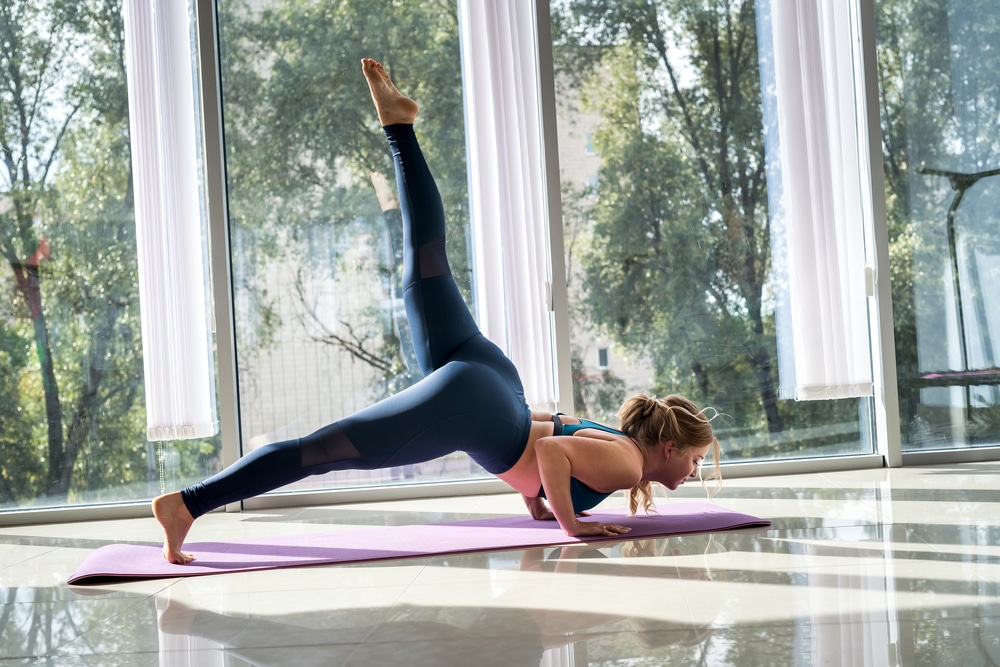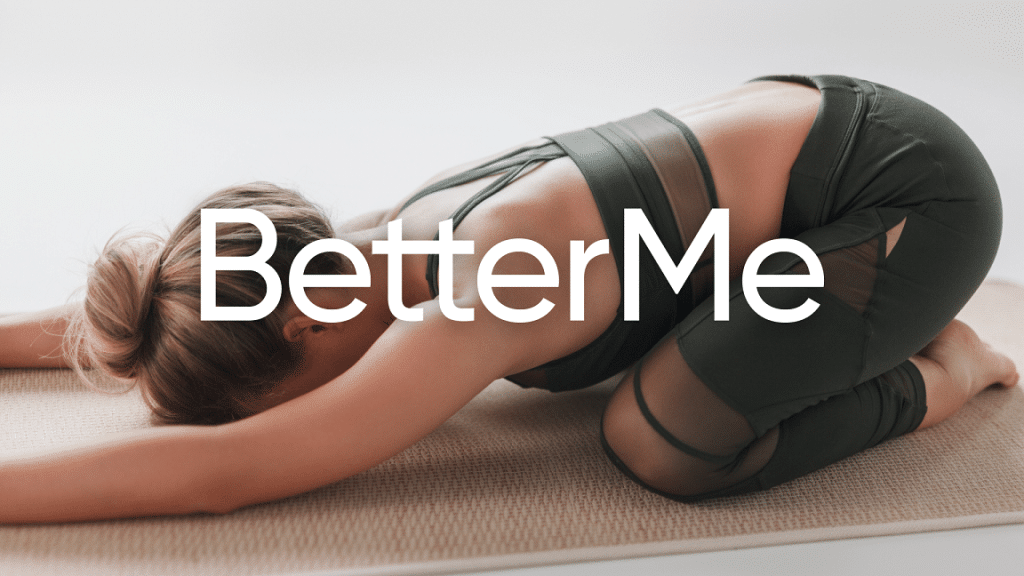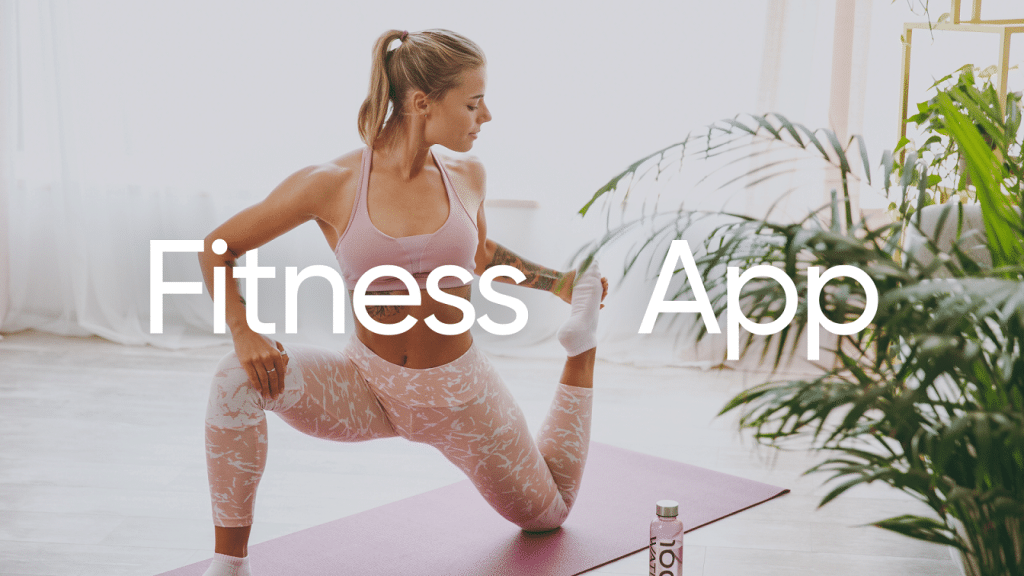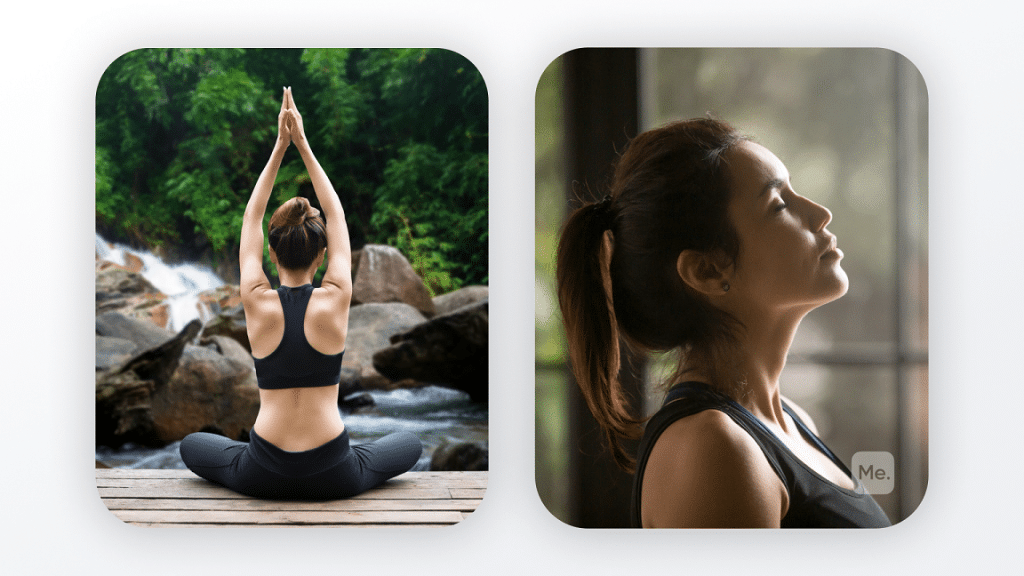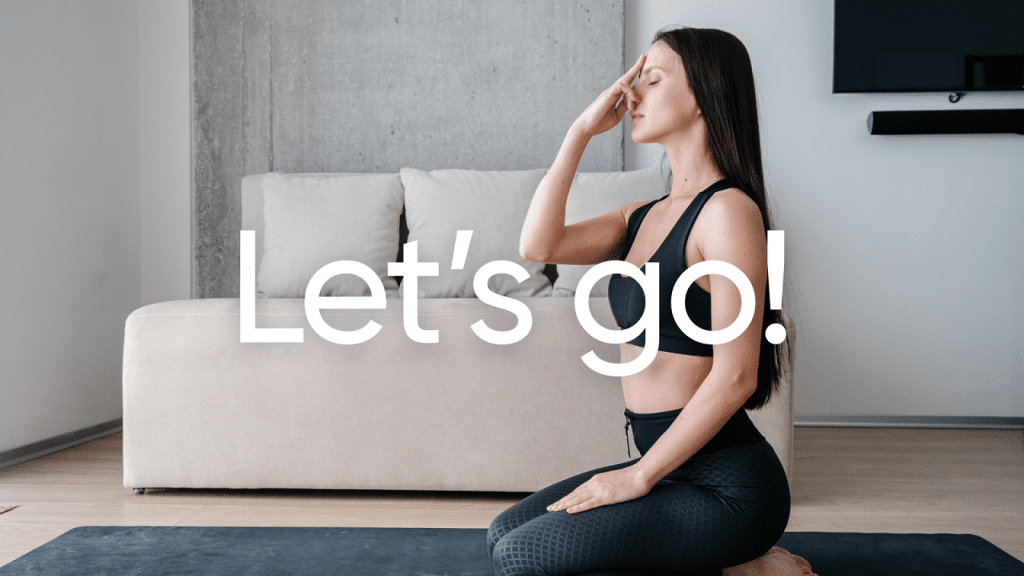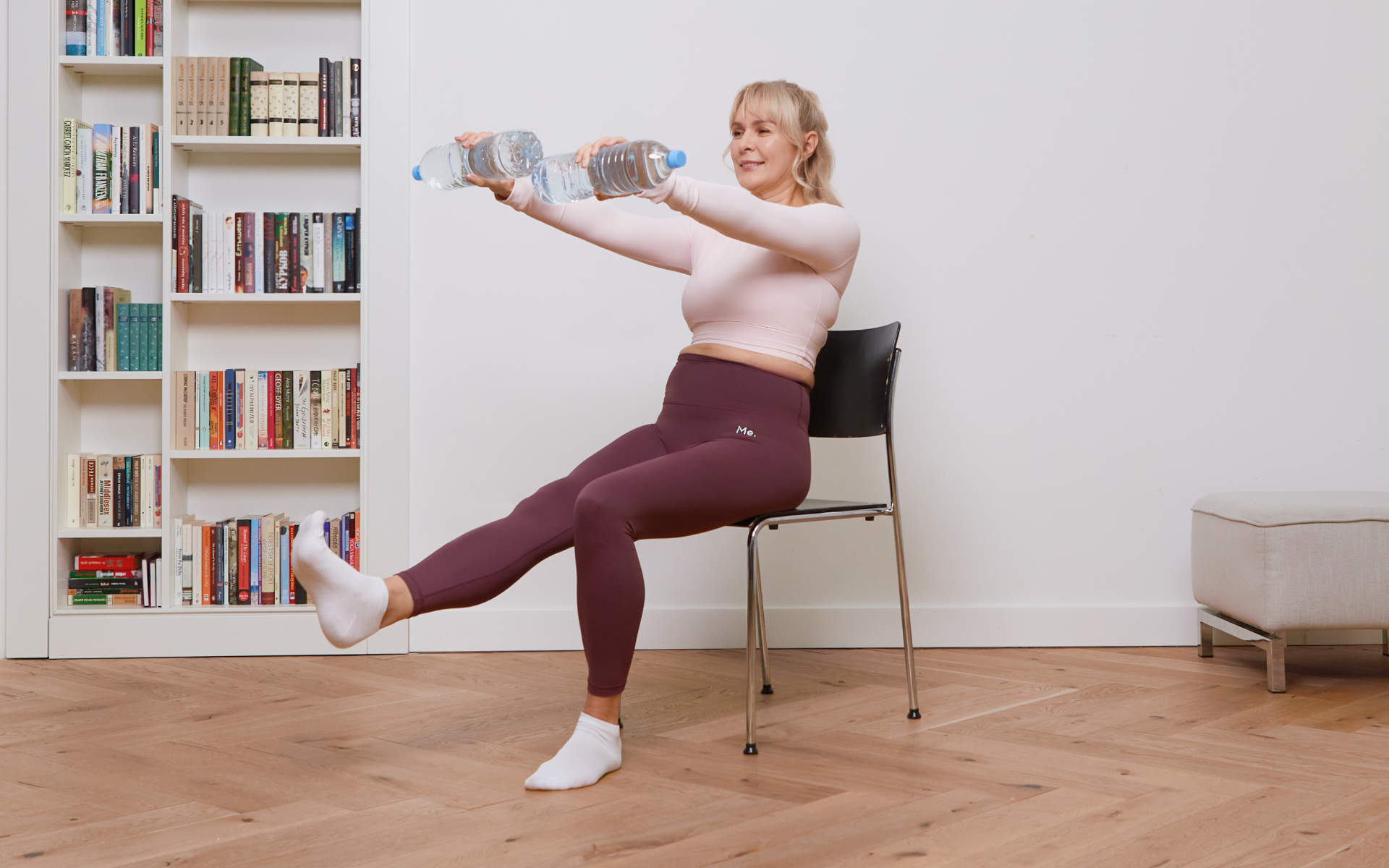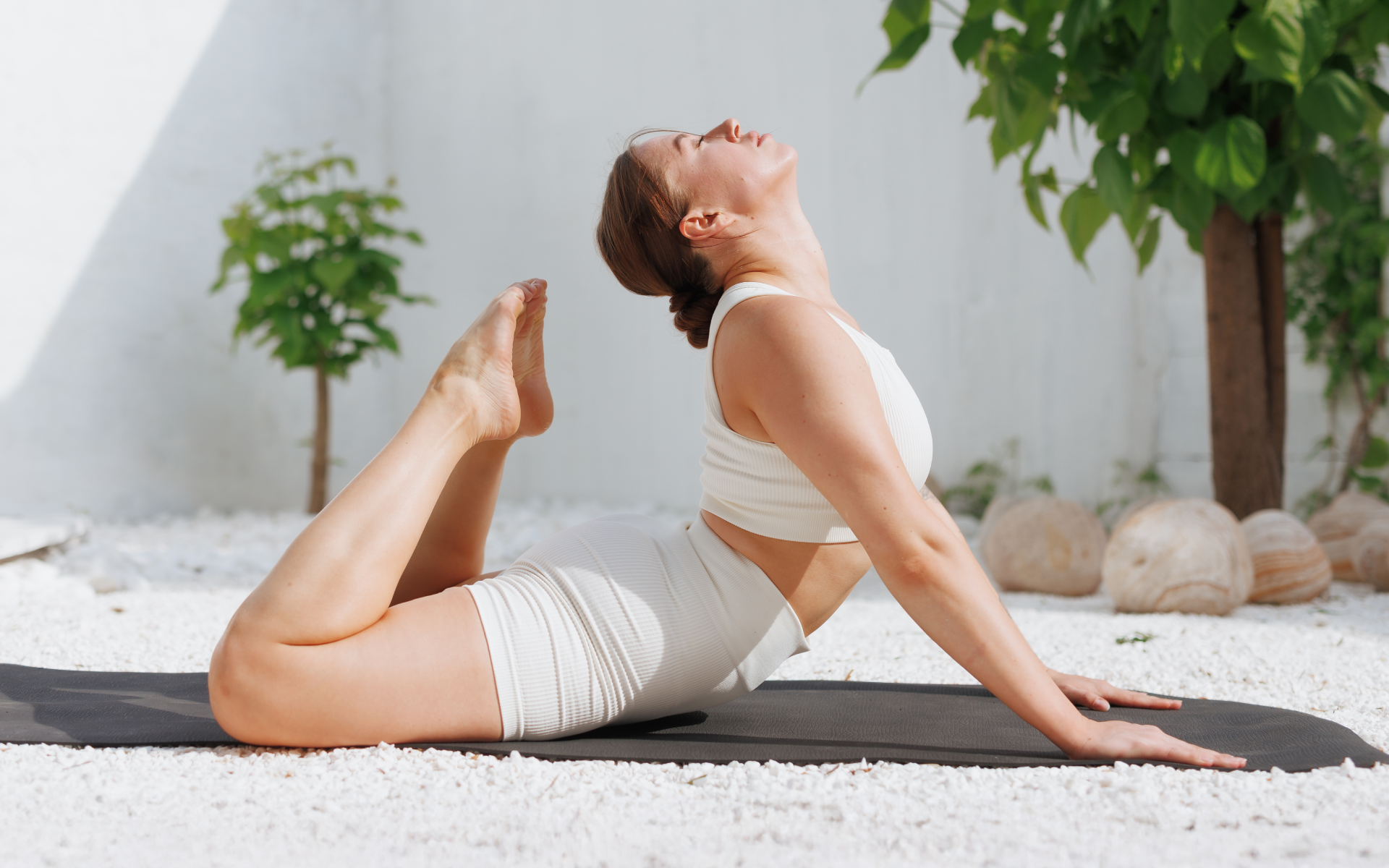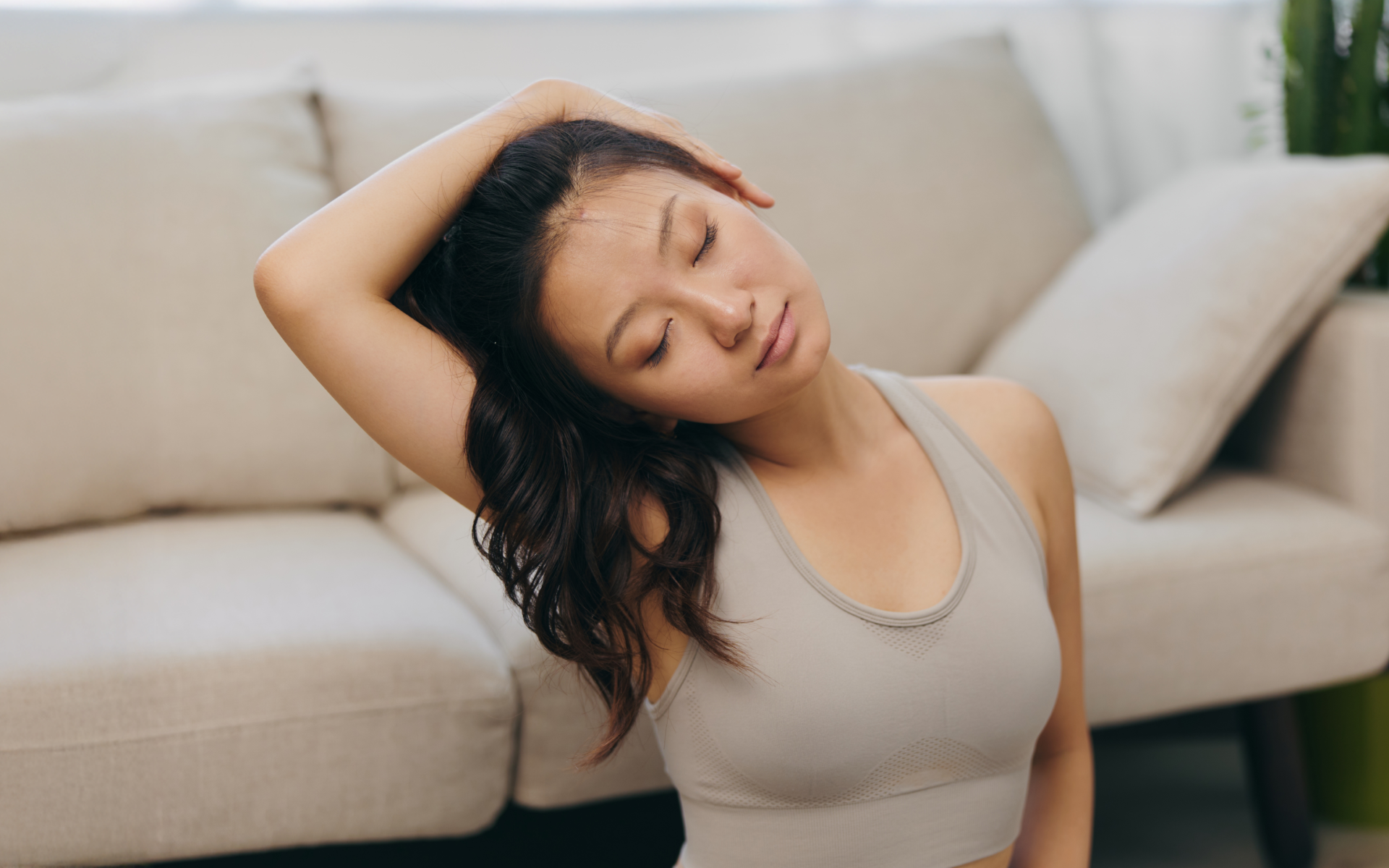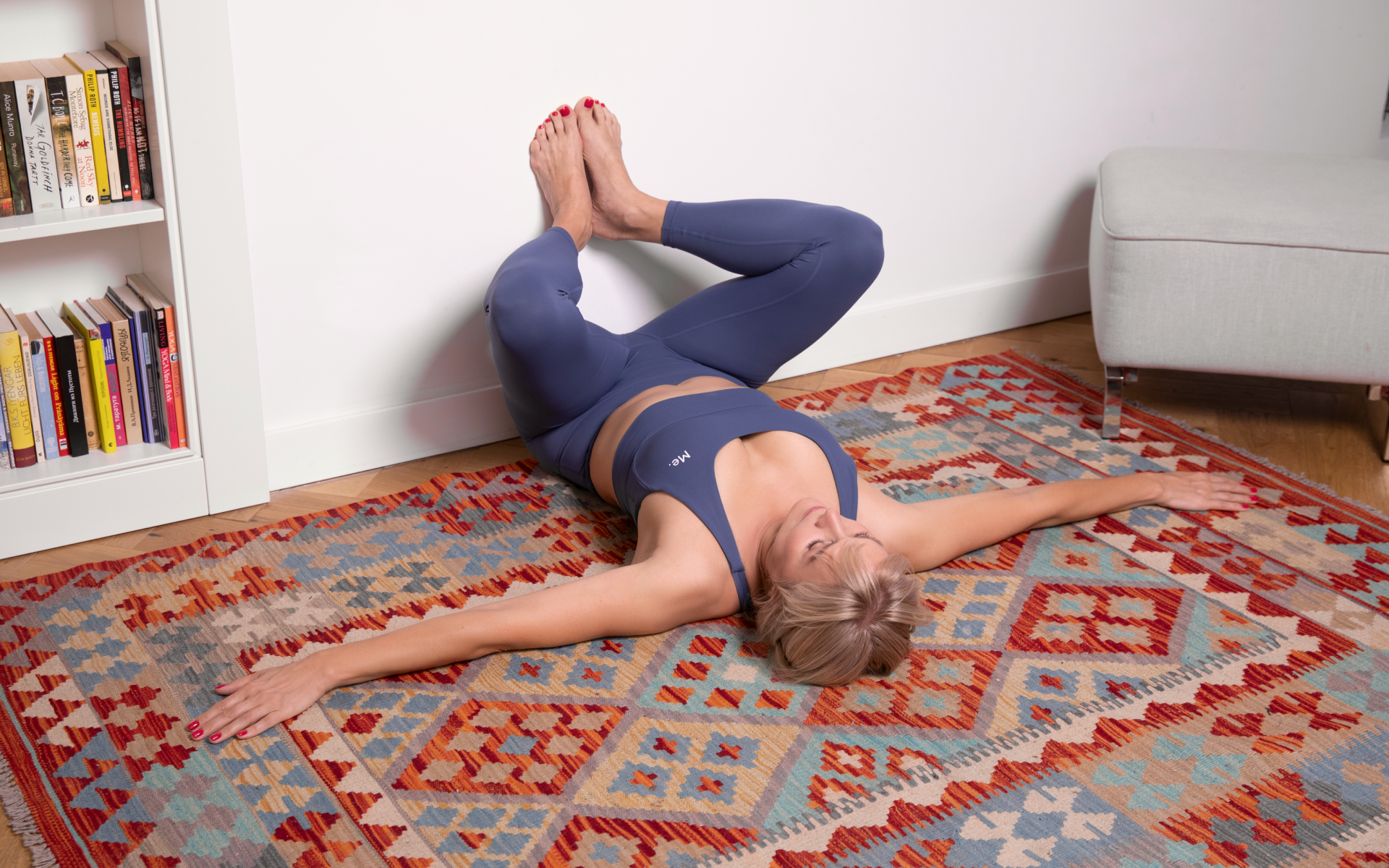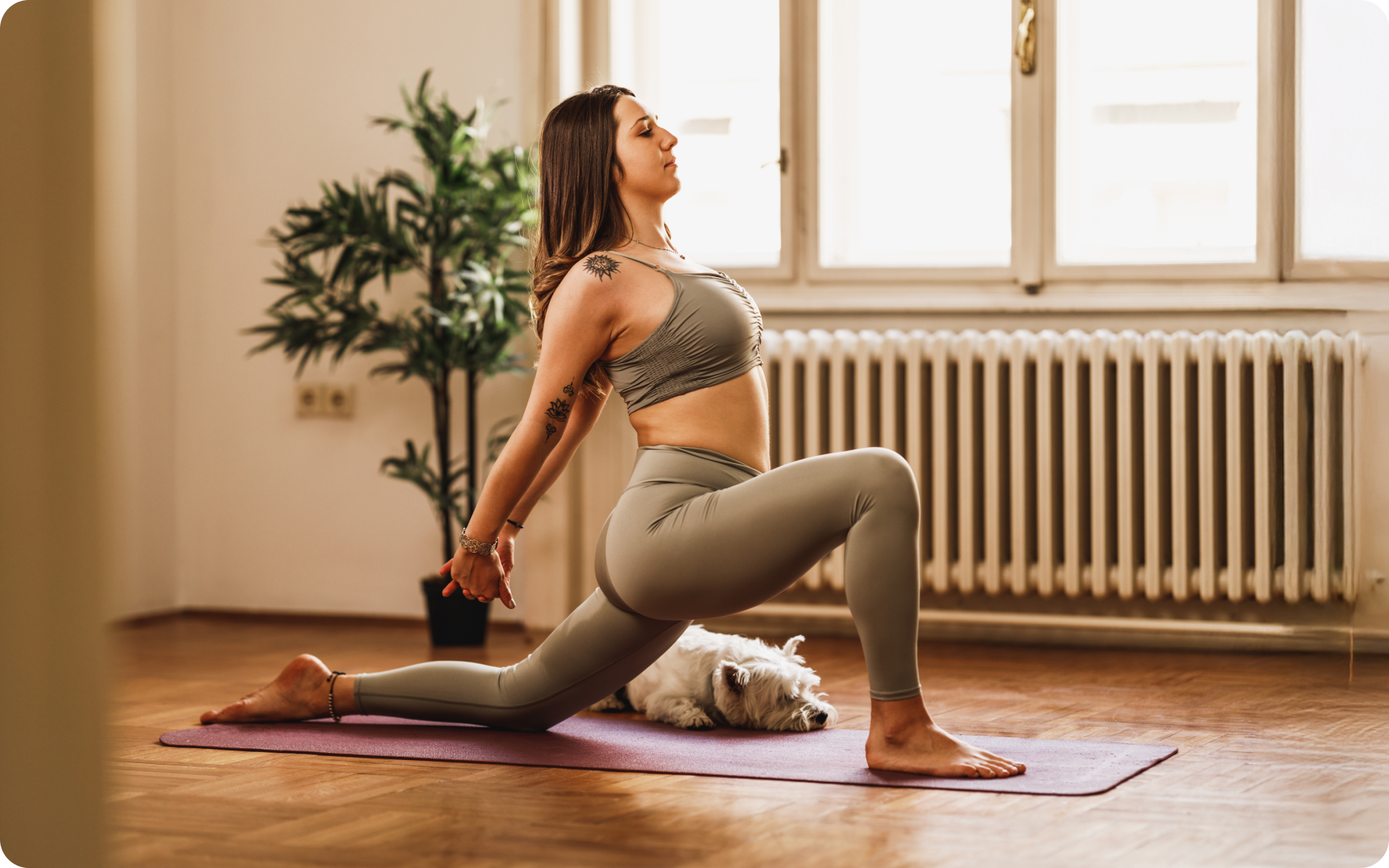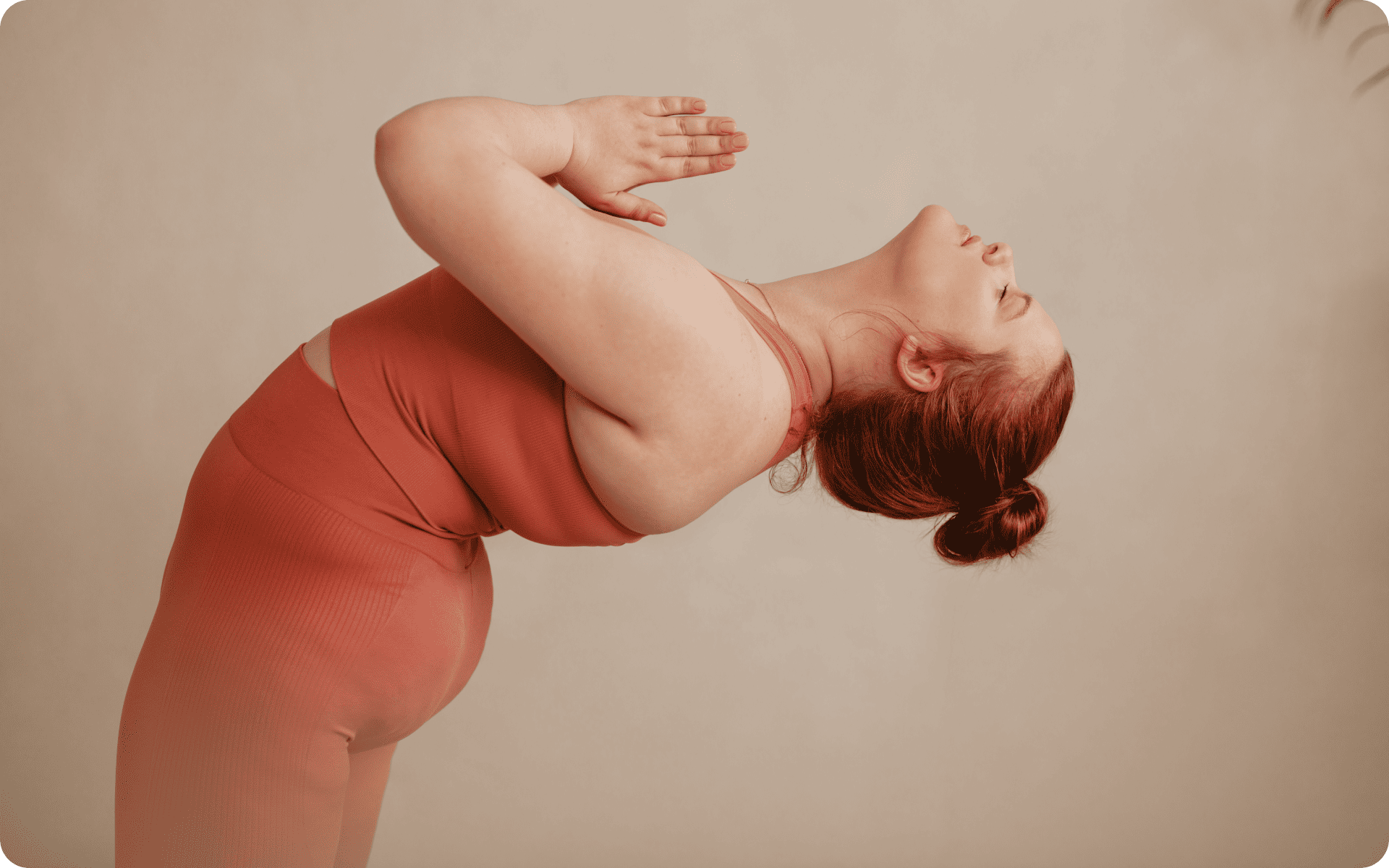Stress and anxiety. These are probably some of the most referenced words in modern times. It comes from different aspects in our lives and if left unattended, can result in serious health implications. Yoga has been steadily rising in popularity over the years, probably due to its many potential physical and mental benefits. In this article, we’ll tell you how you can develop a personal yoga routine and use it to prevent and reduce stress. You want some of that positive growth and self-improvement right? Stick around to find out how.
Get your personalized
meal plan!
What Is Yoga?
First off, the basics. Chances are you’ve heard the term “yoga” mentioned somewhere. That would mean you’re familiar with it at least in a general sense. However, have you ever asked yourself what exactly is yoga? What’s the history behind this practice?
Yoga is an ancient and rather complex practice that stems from Indian philosophy. Initially it began as a spiritual practice, but over time was adopted as a way of promoting physical and mental well-being.
There are several types of yoga ranging from the gentle practices to ones that are physically demanding.
Hatha yoga, for instance, is a great choice for stress management. It’s one of the most common yoga poses for stress relief and due to its easier movement and slower pace, a good choice for beginners.
The basic components of hatha yoga and general yoga classes include:
Poses
These are sometimes called postures. They are a movements designed for the purpose of increasing strength and flexibility.
Poses usually range from simple to challenging. Simple poses can sometimes involve lying on the floor, completely relaxed. On the other hand, challenging poses can entail stretching your body to its physical limits.
Breathing Exercises
Controlling your breathing patterns is a key aspect of yoga. Yoga will fundamentally teach you how doing this can help you take charge of your body and relax your mind.
Read More: Yoga Postures For Flexibility: What Are The Best Poses To Be More Flexible
Relaxation Or Meditation
Chances are you’re going to incorporate relaxation or meditation in yoga. These two concepts will teach you how to become more mindful and aware of your present situation without judgment.
Differences in how yoga is practiced significantly affects one’s health results. Due to this, it can be a bit challenging to evaluate studies about the health effects of yoga.
That being said, it’s also important to note that yoga alongside two practices of Chinese origin (tai chi and qi gong) are meditative movements. This particularly makes them effective when it comes to mental issues.
Yoga For Stress And Anxiety Relief
There’s a lot of talk about stress relief yoga and its benefits to your mental health. However, what’s the science behind all that? We answer this question next.
The How
Yoga is a technique that encourages physical and mental relaxation. By extension, this creates a domino effect where any stress and anxiety is also reduced. The physical posture in contrast, helps in promoting flexibility, alleviating pain and relieving tension.
Yoga poses for stress relief can also help you with releasing physical blockages like muscle knots. This ultimately segways into relaxed and reduced tension emotions.
Additionally, like all exercises, yoga stimulates the production of mood-boosting endorphins. These are ideally your feel-good hormones which positively affects how you handle stress.
When you focus on the present moment during your yoga session, your awareness is enhanced. This greatly boosts your concentration and also centers your mind.
Becoming aware of the dynamic nature of your bodily sensation, feelings and thoughts helps you let go of unnecessary attachments. This includes all the good, neutral and bad experiences. You may also end up learning how to cultivate feelings such as serenity, love and joy.
The Research
There’s a lot of scientific evidence that supports the stress-relieving benefits of yoga.
According to this 2018 study, yoga produced positive results on women practicing Hatha yoga three times a week for 4 weeks. After about 12 sessions, there was a significant reduction in stress, anxiety and depression (12).
These results are in fact encouraging and indicate that yoga can be a complementary solution, thus decreasing the need for prescription drugs. More research is however needed to investigate the long-term role of yoga in stress, anxiety and depression treatment.
This small study done in 2020 among adult men showed that yoga stretches can potentially reduce cortisol levels in your body. It also has some positive effects on your parasympathetic nerve activity which encourages relaxation (1).
Another research done in 2020 of people doing 11 minutes of yoga nidra meditation for 30 days showed reduced stress levels. Their overall well-being and sleep quality were also greatly enhanced (3).
BetterMe app will provide you with a host of fat-frying fitness routines that’ll scare the extra pounds away and turn your body into a masterpiece! Get your life moving in the right direction with BetterMe!
The health benefits of yoga don’t just stop at relieving stress and anxiety. Here are 10 other reasons why you should try yoga today:
Health Benefits Of Yoga
Studies have suggested yoga may have many potential health benefits including:
Controlling Chronic Conditions
Yoga can potentially reduce the risk factors associated with chronic illnesses like high blood pressure or heart disease. In addition to that, yoga can be useful in the management of neck and lower back pains and menopause symptoms (17).
Also, yoga has proved to be effective in alleviating symptoms of several chronic conditions including (17):
- Chronic obstructive pulmonary disease (COPD)
- Asthma
- Insomnia
- Arthritis
- Pain
Reducing Inflammation
Inflammation is usually one of the telltale signs of illness. Conditions like arthritis, diabetes, Crohn’s disease and heart disease have been associated with prolonged inflammation (2).
A review was done on 15 research studies that explored the effect of yoga on inflammation. The result? Yoga – of different intensities, styles and durations – significantly reduced biochemical markers of inflammation in various chronic conditions (7).
Increasing Muscle Strength
It’s true that yoga is often associated with stretching, flexibility and stress relief. However, there are other versions of this practice other than stress relief yoga which are considered to be strength-building.
Yoga is largely a multimodal exercise. So depending on the approach, class level and the instructor it can be used for strength training. In fact, studies in different contexts have shown yoga can be effective at building strength among older adults and children (14, 15).
Boosting Immunity
Stress can negatively affect your immune system. A compromised immune system will in turn make you more susceptible to contracting diseases (4).
While the research is still evolving, some studies have found a link between practicing yoga and a better immune system. This can be attributed to yoga’s ability in fighting inflammation and enhancing cell-mediated immunity (18).
Improved Cardiovascular Functioning
Yogic breathing (pranayama) is a vital part of yoga.
The Journal of Ayurveda and Integrative Medicine conducted a review of 1400 studies that explored the effects of pranayama. A key finding was that this technique can significantly improve the functioning of several systems in your body (5).
Specifically, the review concluded that cardiovascular health benefited the most from controlling the pace of breathing. This was evidenced by the favorable changes in heart rate, arterial pressure, stroke capacity, and contractility of the heart (5).
That being said, the research indicated that yogic breathing can positively influence your brain’s cardiorespiratory center, thus improving functionality (5).
Improved Sleep Quality
When determining the quality of sleep, researchers look at one’s ability to fall and stay asleep. Insomnia affects both aspects.
Yoga can improve both how fast you fall asleep and how long and deeply you stay asleep. This is probably due to the after-effects of exercise and stress relief provided by yoga (8, 11).
Improved Bone Health
Several postures in yoga are isometric contractions. This means that the length of the muscles which hold the pose don’t change, though they’re fully engaged.
For instance, in plank poses the arms, trunks, and legs are fully engaged without lengthening and shortening. This is not similar to when doing movements like pushups.
Yoga asana has been associated with reversing bone loss associated with osteoporosis and osteopenia. This study showed that about 12 minutes of yoga daily can significantly improve your bone health (16).
That being said, it’s important to point out that these findings are mixed and are therefore inconclusive (9).
Read More: Yoga Pelvic Floor Exercises To Fight Pelvic Floor Muscle Tightness, Weakness, And Dysfunction
Improved Flexibility
Two of the leading yoga organizations conducted a worldwide study in 2016 that examined several statistics about yoga. The main purpose of the study was to quantify yoga’s value amid it’s rising popularity.
The most cited reason throughout the whole process was that yoga “increases flexibility” (10).
Flexibility is a crucial part of anybody’s physical health.
Yoga offers a range of poses to choose from that vary in intensity, from high to low. And yes, even the lowest intensity styles have been found to significantly increase flexibility (13).
Helps With Burnout
Burnout – excessive exhaustion that eventually affects your health – seems to be at an all-time high.
A recent study was done to look at the levels of burnout among hospice workers over the course of the COVID-19 pandemic. It was found that yoga-based meditation interventions significantly reduce the effects of burnout. This was largely through improving interoceptive awareness (6).
Risks And Precautions When Doing Yoga
Yoga is considered to be a generally safe type of physical activity for healthy people when performed properly. However, like all other forms of workouts, injuries are always a possibility with improper form.
The most common types of injuries associated with yoga include strains and sprains, with the knee and lower leg being the most affected. Serious injuries are, however, usually rare and the risk of them occurring is lower than other high impact physical activities (17).
Older adults especially need to be extra cautious when practicing yoga. The rate of yoga-related injuries treated in emergency departments is usually higher among people aged 65 years and older (17).
Finally, there’s some risk of yoga aggravating certain pre existing injuries including (17):
- Hip or knee injuries
- Lumbar spine disease
- Balance issues
- Lumbar spine disease
- Glaucoma
Here are some precautions you should take to reduce your chances of getting injured while performing yoga (17):
- Always have a qualified instructor around. Anytime you want to practice yoga, ensure it’s under the guidance of a qualified instructor. Self-study sessions without supervision have been associated with increased injury risks.
- Avoid extreme poses if you’re new to yoga. Extreme practices like shoulder stands, headstands, and the lotus position may not serve you well as a beginner. Start off simple and gradually work your way up.
- Inform your instructor of any existing health conditions. Older adults, pregnant women and any other person with underlying conditions should first consult their doctor. They may need a modification of some poses or even entirely avoid them.
- Be aware of the special risks. Studies have shown that yoga has special risks relating to dehydration and overheating.
Lean and toned up body isn’t just a far-fetched fantasy. Check out the BetterMe app and watch it propel your weight loss journey into high gear!
4 Beginner Yoga For Stress Relief Poses To Try Out Today
Now that we’ve explored the good, the risks and the in between, it’s time to get to the good stuff. Here are some best yoga stress relief poses you can try at home or in the gym:
Corpse Pose
Ensure you’re focusing on breathing deeply as you calm your mind while letting go of the tension during this pose. Here’s how you do it:
- Start by lying down flat on your back then place your feet slightly wider than your hips.
- Let your toes splay out toward the sides.
- Next, position your arms next to your body at about an angle of 45 degrees.
- Now align your head, neck, and shoulders with your spine.
- Take a deep breath before allowing your body to fully relax.
- Hold this pose for about 10 to 20 minutes.
Child’s Pose
This move will help you create an inward focus and allow you to restore your energy. In addition to that, it will also help in mental and physical relaxation.
You can place a cushion under your forehead, torso or thighs for extra support. Here’s how you do it:
- Start by getting into a kneeling position then place your knees slightly apart or together.
- Now sit back on your heels.
- Hinging at your hips, fold forward and rest your forehead on the mat.
- Extend your arms alongside your legs or even in front of you.
- Take a deep breath and focus on fully relaxing your body.
- Hold this position for about 5 minutes.
Cat-Cow Pose
This move lets you connect your breath to your movements while calming your mind and releasing the stress. Ensure you allow your breath to guide you through each movement.
Here’s how you do it:
- Start by getting into a tabletop position
- Now place your wrists below your shoulders and your knees underneath your hips.
- Inhale while turning your gaze toward the ceiling then allow your belly to move toward the mat. Arch your back to complete the cow pose.
- Next, exhale while drawing your chin toward your chest then bend your spine toward the ceiling. This completes the cat pose.
- Maintain the flow between these two positions for about 1 minute.
Legs-Up-The Wall Pose
This move allows for deep relaxation while boosting lymphatic flow and circulation. Here’s how you do it:
- Start by sitting on the floor and facing a wall. Ensure your body is positioned as close to the wall as possible.
- Now lie on your back before placing your legs up the wall with straight knees.
- Next, position your hips next to the wall or just a few inches away.
- Place your arms alongside your body or alternatively, put one hand on your chest and the other on your belly.
- Hold this position for about 15 minutes.
Tips For A Successful Yoga For Stress Relief Session
Yoga can be very effective in calming your body and mind. To get the most out your workout, follow these tips:
Let Go Of Any Negative Thoughts
It’s not unusual for any negative thoughts to crop up when doing yoga.
Practice awareness, acceptance, and detachment to formulate positive mental patterns. The result will ultimately be fewer negative thoughts, thus you’ll be less affected by them.
Teach yourself how to focus on the present. Always bring your attention to your thoughts only when they arise and pass. Doing this will help you recognize their fleeting nature.
Make Use Of Stress Relief Techniques Off The Mat
To help manage stress off the mat, start by looking at your lifestyle and schedule to determine where to make appropriate changes. These changes can include:
- Developing healthy eating plans
- Allow yourself more free time
- Take time to reconnect with nature
It’s true that yoga comes with lots of potential benefits. However, remember that you’re still going to experience some ups and downs in life and that’s normal.
If you discover your yoga routine only does more harm than good in your life, consider talking to your instructor about it. They can help you find a personalized practice that best serves your needs.
Finally, remember to always consult with your doctor before starting any yoga routine, especially if you’re on medication or have some health conditions.
Conclusion
There are several ways to manage stress but exercise is probably one of the most effective. Yoga is a great stress reliever. It is also an all rounder that helps increase your flexibility, manage pain and increase strength.
You need to understand that we are built differently. So make sure to modify the yoga poses based on your individual abilities. Feel free to explore, just practise safe yoga while at it.
DISCLAIMER:
This article is intended for general informational purposes only and does not serve to address individual circumstances. It is not a substitute for professional advice or help and should not be relied on for making any kind of decision-making. Any action taken as a direct or indirect result of the information in this article is entirely at your own risk and is your sole responsibility.
BetterMe, its content staff, and its medical advisors accept no responsibility for inaccuracies, errors, misstatements, inconsistencies, or omissions and specifically disclaim any liability, loss or risk, personal, professional or otherwise, which may be incurred as a consequence, directly or indirectly, of the use and/or application of any content.
You should always seek the advice of your physician or other qualified health provider with any questions you may have regarding a medical condition or your specific situation. Never disregard professional medical advice or delay seeking it because of BetterMe content. If you suspect or think you may have a medical emergency, call your doctor.
SOURCES:
- Beneficial Effects of Yoga Stretching on Salivary Stress Hormones and Parasympathetic Nerve Activity (2020, nih.gov)
- Chronic Inflammation (2021, nih.gov)
- Effectiveness of a short Yoga Nidra meditation on stress, sleep, and well-being in a large and diverse sample (2020, springer.com)
- Effects of stress on immune function: the good, the bad, and the beautiful (2014, pubmed.gov)
- Effects of yogic breath regulation: A narrative review of scientific evidence (2019, sciencedirect.com)
- Feasibility, Acceptability, and Outcomes of a Yoga-Based Meditation Intervention for Hospice Professionals Combat Burnout (2021, nih.gov)
- Impact of Yoga on Inflammatory Biomarkers: A Systematic Review (2018, sagepub.com)
- Interrelationship between Sleep and Exercise: A systematic Review (2017, nih.gov)
- Role of Yoga in Osteoporosis Rehabilitation (2018, juniperpublishers.com)
- The 2016 Yoga in America Study Conducted by Yoga Journal and Yoga Alliance (2016, yogaalliance.org)
- The effect of yoga on sleep quality and insomnia in women with sleep problems: a systematic review and meta-analysis (2020, biomedcentral.com)
- The Effect of Yoga on Stress, Anxiety, and Depression in Women (2018, pubmed.gov)
- The effects of selected asanas in iyengar yoga on flexibility: pilot study (2013, pubmed.gov)
- The effects of yoga compared to active and inactive controls on physical function and health related quality of life in older adults- systematic review and meta-analysis of randomized controlled trials (2019, nih.gov)
- The effects of yoga practice in school physical education on children’s motor abilities and social behavior (2016, nih.gov)
- Twelve-Minute Daily Yoga Regimen Reverses Osteoporotic Bone Loss (2016, nih.gov)
- Yoga: What You Need To Know (2021, nih.gov)
- Yoga and immune system functioning: a systematic review of randomized controlled trials (2018, pubmed.gov)
